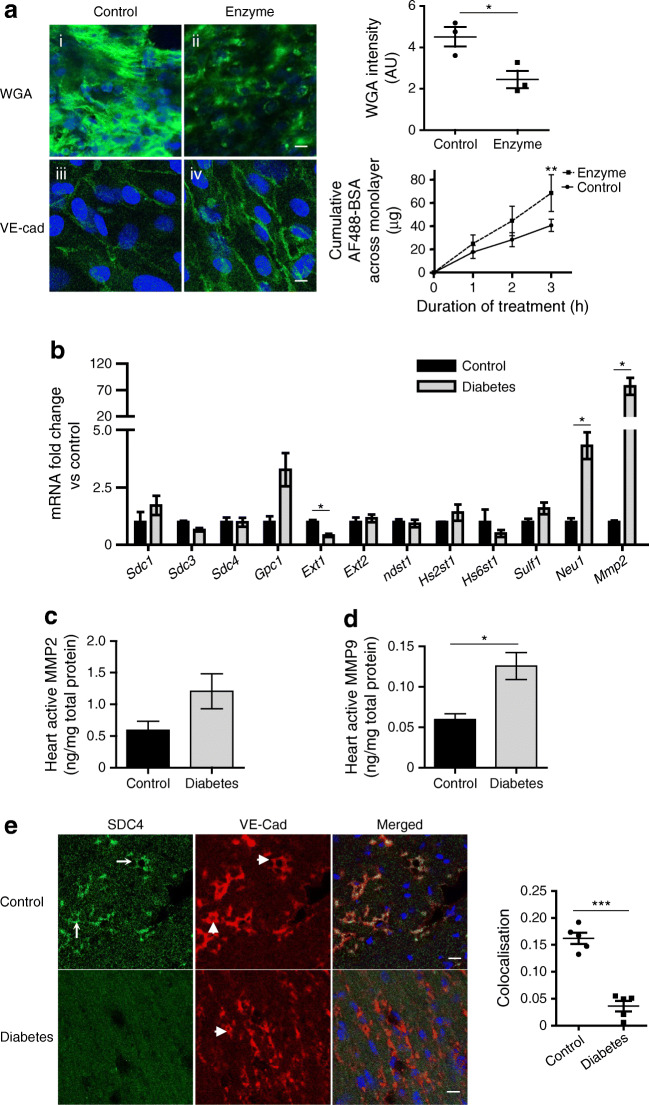Fig. 3.
Enzymatic eGlx disruption causes increased transendothelial permeability and myocardial MMP activity is increased in diabetes. The direct effect of eGlx damage on endothelial cell function was investigated on ciCMVECs. ciCMVECs were cultured until cells formed a confluent monolayer, then subjected to enzyme treatment (heparinase 1 U/ml + hyaluronidase 4.5 U/ml + chondroitinase 100 mU/ml) in serum-free medium for 3 h before BSA passage measurement. (a) Enzymatic treatment reduced eGlx, confirmed by reduced FITC–WGA binding (n = 3; *p< 0.05 [paired t test]), and enhanced BSA passage across the ciCMVEC monolayer (n = 3; **p< 0.01 [two-way ANOVA]) (i, ii). The ciCMVEC monolayer cell–cell junctions remained intact, as shown by maintained VE-cadherin junctional staining (iii, iv). Scale bar, 10 μm. (b) The mRNA expression levels of enzymes relevant to eGlx synthesis and shedding were investigated with TaqMan qRT-PCR array on endothelial cells collected by FACS from FVB mouse hearts 9 weeks after STZ injection. Mmp2 mRNA level was dramatically increased (n = 3; *p< 0.05 [unpaired t test]). (c, d) MMP2 (c) and MMP9 (d) activity in FVB mouse heart tissue homogenate were measured by activity assays. We found a significant increase in MMP9 activity in diabetic heart (n = 4; *p< 0.05 [unpaired t test]) and a non-significant increase in MMP2 activity (p = 0.11). (e) SDC4 was mainly expressed in coronary microvessels and its expression was reduced in left ventricles of mice with DCM (n = 5; ***p< 0.001 [unpaired t test]). Arrows point to SDC4 staining and arrowheads point to VE-cadherin staining. Scale bar, 10 μm. Data are presented as mean ± SEM. AF488, Alexa Fluor 488; AU, arbitrary units; VE-Cad, VE-cadherin

